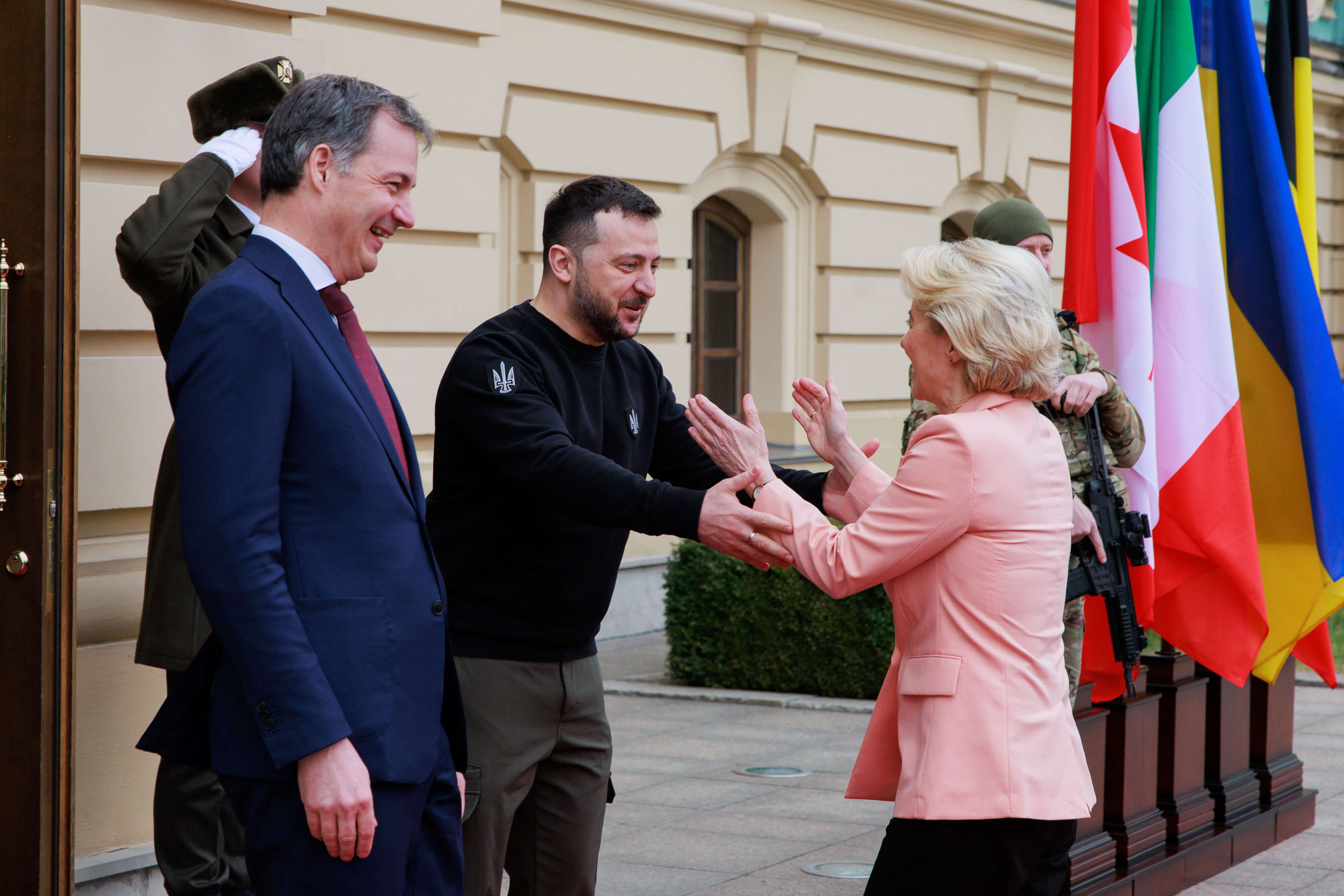The spectre of default is once again hovering over Ukraine. This concern has arisen after Ukraine failed to reach an agreement with investors to restructure $2.6 billion in debt. If Kyiv does not make an estimated $600 million payment on GDP warrants by 31 May, there will be a partial default.
"There was a condition that payments would be made if GDP grows. The warrants stipulate payouts to holders if Ukraine’s annual economic growth exceeds 3 per cent," said Yaroslav Zhelezniak, a Ukrainian economist and parliamentarian.
"This isn’t just about money—it’s about fair and equal treatment of all creditors," he added, noting that Ukraine has been restructuring its debts since Russia’s full-scale invasion in 2022.
Despite 5.5% GDP growth in 2023, Kyiv was unable to meet its obligations to private investors, as the Ukrainian economy contracted by nearly 30 per cent in the previous year due to the Russian aggression. Last year, Ukraine’s GDP grew by a modest 2.9%, according to the State Statistics Service of Ukraine.
“The GDP warrants were designed for a world that no longer exists,” Ukraine’s Finance Ministry stated on Thursday.
Non-payment of the GDP warrants could jeopardise the sustainability of Ukraine’s financial assistance programme with the international financial institutions, which, according to the IMF, amounts to $15.6 billion.
“This could potentially have a negative impact on the broader Western financial assistance,” says Kyrylo Shevchenko, the former head of the National Bank of Ukraine. “This is likely the primary reason why Ukraine is pursuing a deal with the warrant holders. Two options are on the table – either exchange the warrants for the regular Eurobonds or postpone the payments on them until 2028. Yet the minority of warrant investors are still resisting.”
The national debt reached a record high
Nevertheless, Ukraine has successfully restructured most of its liabilities, which amounted to $20 billion this year.
And since the onset of Russia’s full-scale invasion, the country has been in a “restricted default” state, facing economic challenges far more severe than a typical recession.
The Ukrainian national currency, the hryvnia, was devalued by 25% against the U.S. dollar, with inflation steadily rising over the past three years, averaging 14.1% in the decade ending 2022—well above the Eastern European regional average of 7.7%.
Ukraine faces a critical labour shortage due to millions of refugees
In 2022, Ukraine’s National Bank had raised its key policy rate to 25% (now it’s 15.5%). Ukraine faces a critical labour shortage due to millions of refugees, has a devastated industrial and energy sector, and has severely disrupted exports.
Between 2021 and 2024, Ukraine’s public debt almost doubled, partly due to the devaluation of the hryvnia. This year, the national debt reached a record high, equivalent to 92% of the country’s GDP, totalling nearly 7 trillion hryvnia (over $166 billion). Forecasts suggest it may exceed 100% of GDP soon.
The global economic environment
The global economic environment also poses significant challenges for Ukraine. With disrupted supply chains, the World Bank and IMF forecast a slowdown in growth for both developed and emerging economies.
"If global growth slows down, trade slows down, more countries and interest rates stay high, then you are going to get many of these countries getting into debt distress, including some that are commodity exporters," Indermit Gill, the World Bank's chief economist, told Reuters.
Ukraine and other former Soviet countries share the shattering memory of a major economic crisis in 1998, caused by the default in Russia
Ukraine is traditionally a major exporter of agricultural commodities, feeding around four hundred million people around the world.
Ukraine and other former Soviet countries share the shattering memory of a major economic crisis in 1998, caused by the default in Russia.
The economic downturn was very acute at the time, and people faced serious hardships. Every time the word “default” comes up in the public discussion in Ukraine, this memory is what it’s associated with, and consequently people become quite scared.
Achilles heel of Ukraine’s economy
Nevertheless, the current conditions are vastly different from those three decades ago, and it’s the curtailing of Western public assistance that is the Achilles’ heel of Ukraine’s economy right now, not its relations with private investors.
 Apart from massive in-kind military aid, Ukraine has received more than $100 billion since 2022, mostly from the EU and the US - Volodymyr Zelenskyy with Ursula Von der Leyen
Apart from massive in-kind military aid, Ukraine has received more than $100 billion since 2022, mostly from the EU and the US - Volodymyr Zelenskyy with Ursula Von der Leyen
Apart from massive in-kind military aid, Ukraine has received more than $100 billion since 2022, mostly from the EU and the US.
As long as this support continues, even a partial default due to unpaid GDP warrants debt will not lead to major consequences, as Ukraine cannot finance itself from the market anyway.
Western money is provided to keep Ukraine afloat as it battles Russia, so it’s the geopolitical events and considerations surrounding the Russo-Ukrainian war that are paramount for the nation’s financial stability.
Still, Zhelezniak emphasised that Ukraine will continue negotiating, with Kyiv determined to explore every opportunity for debt restructuring.